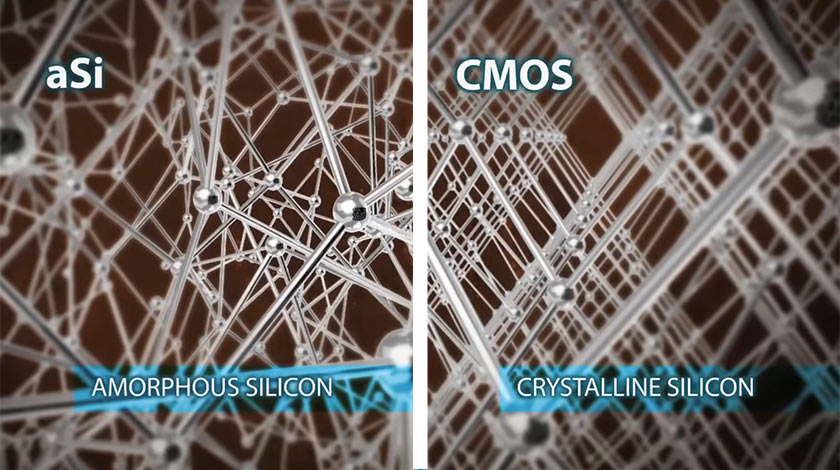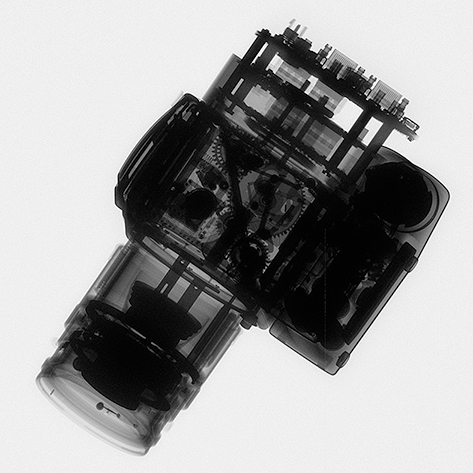Teledyne DALSA’s Rad-icon product family of large-area digital x-ray cameras offers users a high-speed, high-performance x-ray imaging detector with a fast, reliable PC interface (either GigE or CameraLink) for easy integration.

The Rad-icon product family leverages our advanced CMOS image sensing technology, which enables the delivery of low-dose x-ray images and yields higher image quality than aSi flat panels and image intensifier devices. Rad-icon cameras are capable of frame rates up to 30 fps, and communicate via CameraLink data cable or a standard Cat 6e over lengths up to 100 m.
See the benefits of CMOS sensorsRad-icon detectors are available with different Gd2O2S (Gadox) scintillator options to address a range of resolution and sensitivity requirements. The camera interface allows easy access to features such as adjusting the frame rate, single and multiple frame acquisitions, and control of advanced timing modes.
Each Rad-icon ships with user-friendly software tools for stand-alone operation or easy integration with your application software.

| Supported Interfaces | GigE Vision, Camera Link |
| Model | Active Area | Resolution | Interface | Pixel Size | Max Frame Rate |
|---|---|---|---|---|---|
|
Rad-icon 1520 Part number: SB1504 |
204 x 153 mm | 1548 x 2064 | GigE Vision | 99 µm |
Standard:
16 fps
|
|
Rad-icon 3030 Part number: SB1521 |
306 x 306 mm | 3096 x 3100 | Camera Link | 99 µm |
Standard:
30 fps
|
|
Rad-icon 2022 Part number: SB1533 |
204 x 221 mm | 2064 x 2236 | Camera Link | 99 µm |
Standard:
30 fps
|
|
Rad-icon 0720 Part number: SB1739 |
68 x 204 mm | 688 x 2064 | GigE Vision | 99 µm |
Standard:
66 fps
|
|
Rad-icon 3030HS Part number: SB1785 |
306 x 306 mm | 3096 x 3096 | GigE Vision | 99 µm |
Standard:
50 fps
|
|
Rad-icon 2329 Part number: SB1593 |
228 x 291 mm | 4608 x 5890 | GigE Vision | 49.5 µm |
Standard:
2 fps
|
|
Rad-icon 1523 Part number: SB1711 |
146 x 228 mm | 2940 x 4608 | GigE Vision | 49.5 µm |
Standard:
15 fps
|
|
Rad-icon 0723 Part number: SB1774 |
64 x 228 mm | 1300 x 4608 | GigE Vision | 49.5 µm |
Standard:
30 fps
|
|
Rad-icon 2329HS Part number: SB1794 |
228 x 291 mm | 4608 x 5890 | GigE Vision | 49.5 µm |
Standard:
20 fps
|
|
Rad-icon 0723HS Part number: SB1806 |
64 x 228 mm | 1300 x 4608 | GigE Vision | 49.5 µm |
Standard:
50 fps
|
|
Rad-icon 1523HS Part number: SB1808 |
146 x 228 mm | 2940 x 4608 | GigE Vision | 49.5 µm |
Standard:
20 fps
|
| Document | Type |
|---|---|
| NDT Brochure |
| Document | Type |
|---|---|
| Rad-icon Family Datasheet |
| Document | Type |
|---|---|
| Rad-icon 1520 User Manual | |
| Rad-icon 1523 User Manual | |
| Rad-icon 2022 User Manual | |
| Rad-icon 2329 User Manual | |
| Rad-icon 2329HS User Manual | |
| Rad-icon 3030 User Manual |
| Document | Type |
|---|---|
| Analog Film vs Digital CMOS Application Brief |